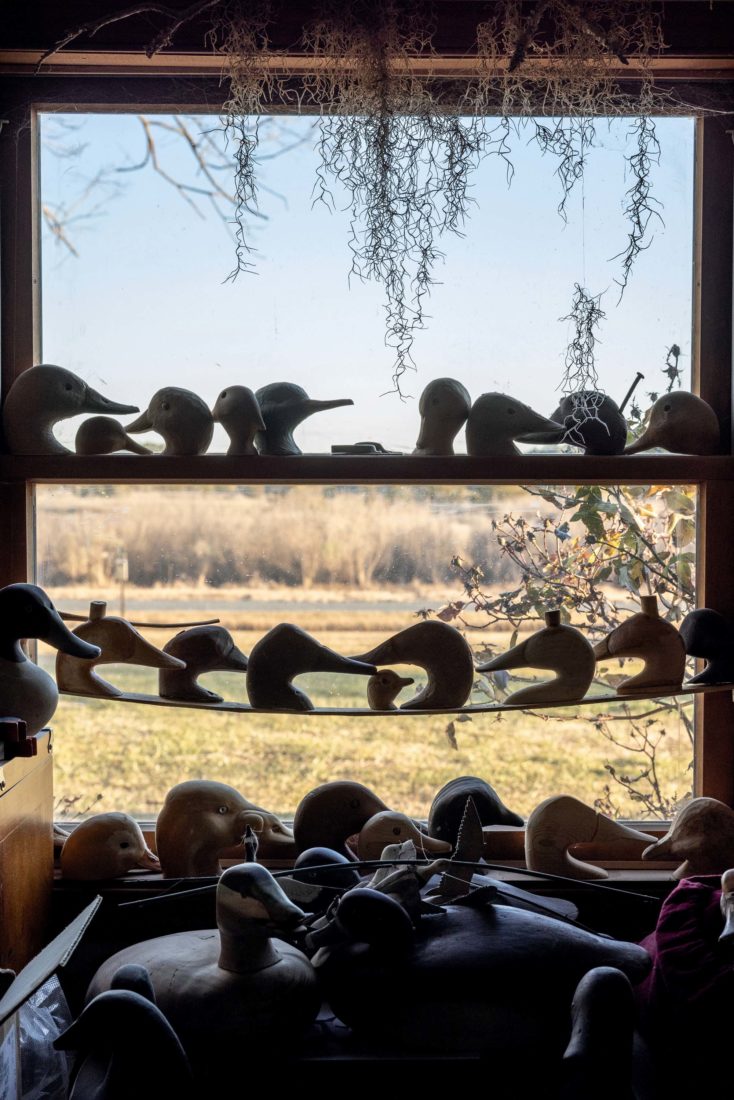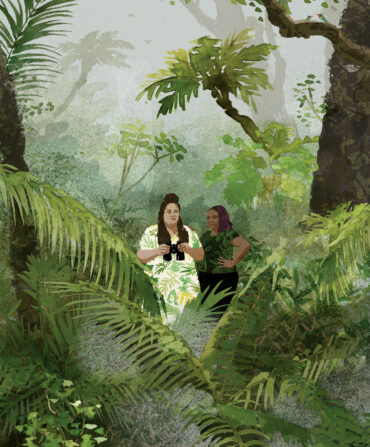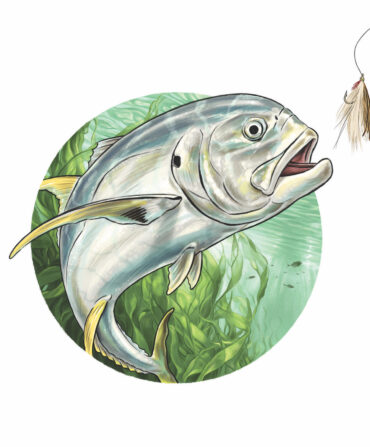Rich Smoker, a sixty-eight-year-old Maryland decoy carver, says he never begins work on one of his coveted birds until he actually feels a visualization of it bubble up inside him. “I have to be inspired,” he says. “That’s the biggest part of the entire process.”
Inspiration, as it turns out, is all around him. Smoker’s home and woodshop are on an island in the Big Annemessex River on Maryland’s lower Eastern Shore, right in the middle of the Atlantic Flyway, one of North America’s four major migratory bird routes. “Looking out of my window today I’ve seen buffleheads, surf scoters, and some ruddy ducks,” Smoker says. “There are some loons around, too, which is good because I’m working on a pair of them right now.”
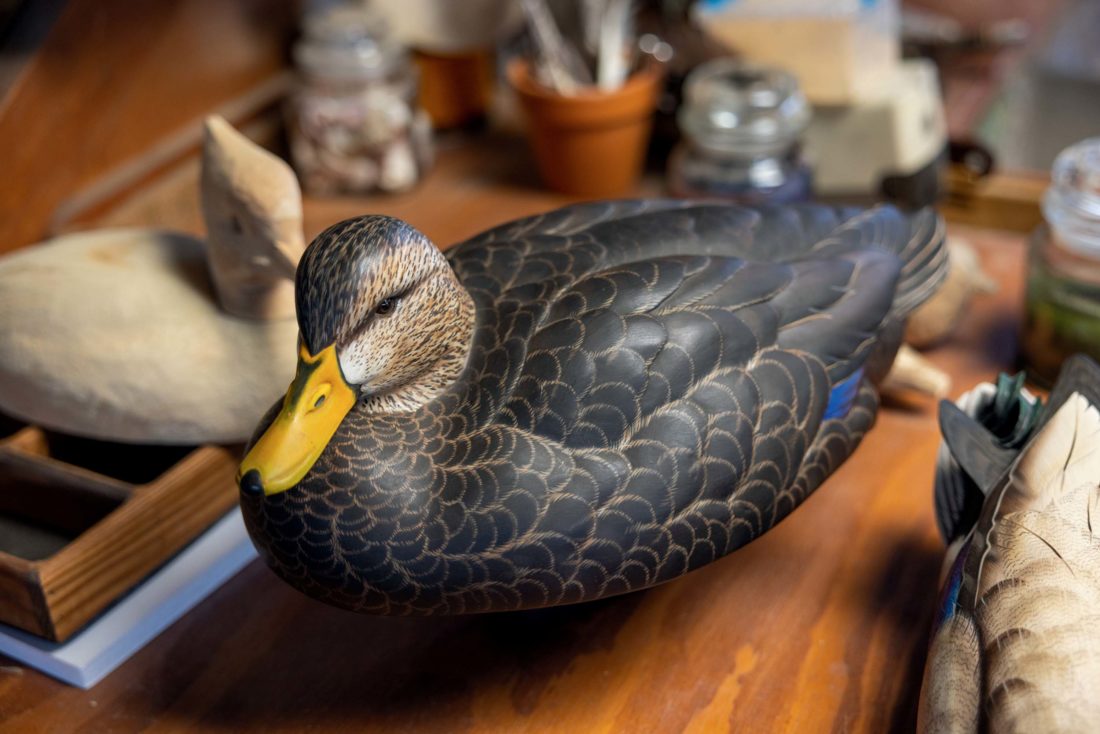
And if the birds aren’t stirring enough, the aura of the Eastern Shore—one of the bastions of bird carving—will often do the trick. “Everyone here seems to incorporate birds in their lives,” Smoker says. “It runs in the tap water.” The area has been home to, among others, Lem and Steve Ward, two brothers who became famous carvers, as well as present-day pros such as Oliver Lawson and Mark McNair. Many consider the Ward Museum of Wildfowl Art in Salisbury, named in honor of the Wards, the Louvre of the decoy-carving world.
Smoker has picked up the carving mantle from the Wards and wears it well. He now ranks among the most decorated living carvers, with a résumé that includes more than a hundred “best in show” honors and two “best in the world” titles. His finest commissioned birds can fetch north of $20,000. And in 2019, the National Endowment for the Arts named him a National Heritage Fellow, a designation bestowed annually upon the nation’s best artists, making him one of only three decoy carvers in history to receive the honor (Lem Ward was another).
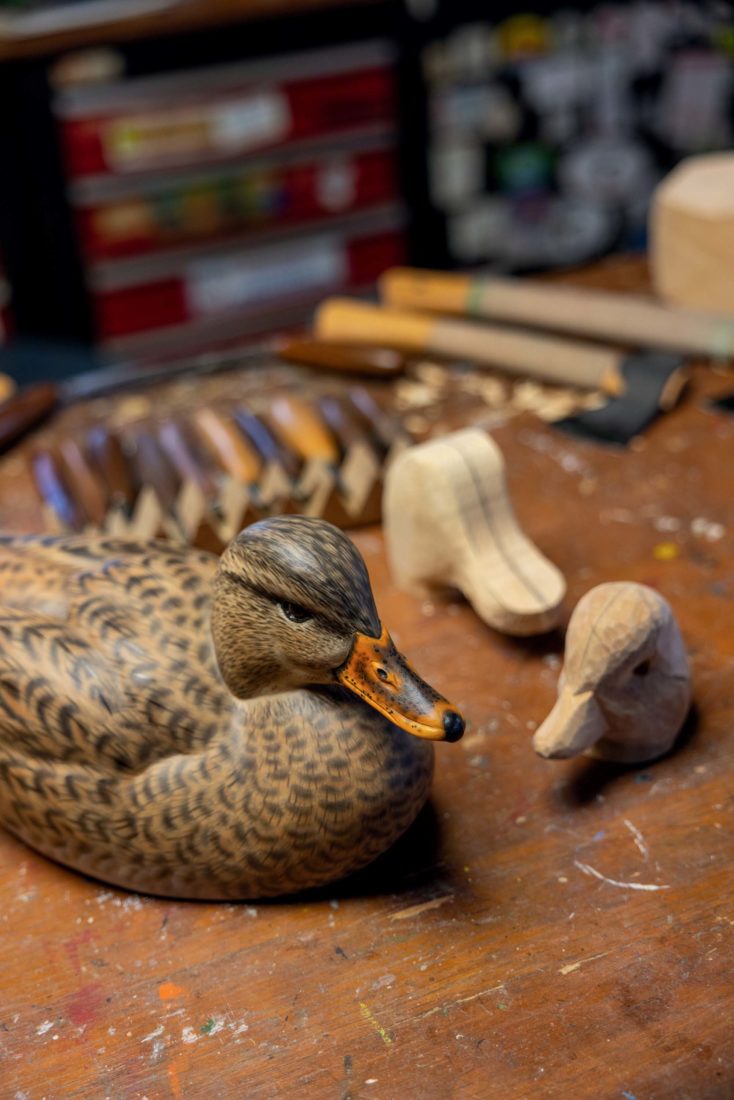
Smoker grew up on an island in Pennsylvania’s Susquehanna River. In high school, he fell hard for duck hunting but rarely had money for decoys. His father, a high school industrial arts teacher, suggested he use the woodshop to learn how to carve his own. “I took to it right away,” Smoker says.
After graduating, Smoker got a job in a local taxidermy shop and was put in charge of the birds. “I got to learn about these animals from the inside out,” he says. “I had to figure out what they were, really learn their anatomy, and then mount them in a realistic way.” Those lessons would come in handy when he decided to pursue his true calling.
In 1971, Smoker—who had continued to carve on the side—attended a carving show at what was then the Ward Foundation with his father. “I walked through those doors and immediately realized what I wanted to do with the rest of my life,” he says. It took a while to get there, but by 1979, Smoker was carving full-time. Three years later, he and his wife moved to the Eastern Shore.
An individual bird, be it waterfowl or woodland, can take a day to complete (though he once carved, painted, and finished one at a festival in an hour), or it can take ten months, depending on the size and intricacy. To start, Smoker knocks out some highly detailed life-size dimensional drawings of the bird. Then he cuts a block of wood—usually white pine, white cedar, or tupelo—with a band saw and begins chopping out the rough form with a hatchet. He uses handmade knives and, occasionally, when his carpal tunnel syndrome flares, a power tool, to sculpt the form. Then comes the painting, which he says is his favorite part. “It’s really important. You can do a hell of a decoy, but if you can’t paint, you have a problem.”
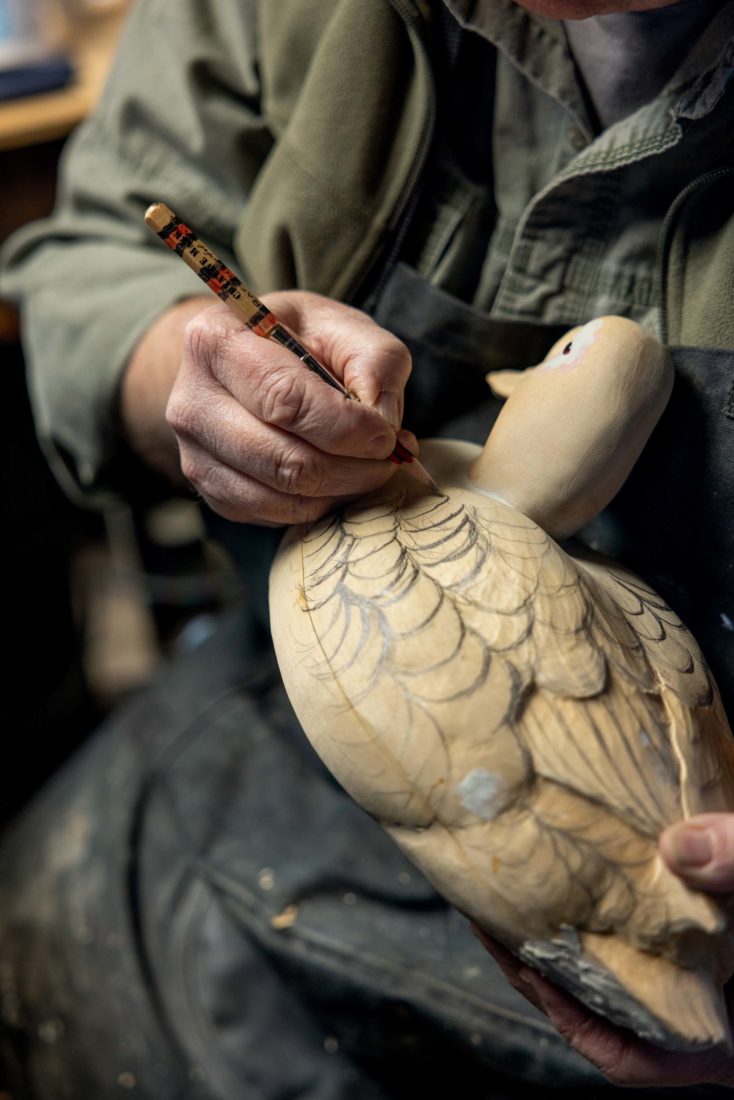
The magic of a carving, Smoker says, isn’t in the flashy feathers—it’s in the eyes. “If you can look into the eyes and see the soul of the animal, you’ve accomplished what you’re after.” He learned much about the individuality of birds from an aviary he once owned; on the ground within, he embedded an old heating drum to sit in, so he could get face-to-face with the pintail, mandarin ducks, and other birds he kept.
Since the advent of lighter and hardier plastics in the 1950s and 1960s, hunters rarely use wooden decoys for their original purpose. His clients consider Smoker’s decoys collectible art, a historical continuation of the ones the Wards and other past masters, like Elmer Crowell and Charles Perdew, made. Smoker himself, though, still hunts ducks over some of his own wooden decoys, ones he modeled after a Ward brothers’ pattern. “Their patterns hadn’t been hunted over for seventy years, so I decided to make a rig of them,” he says.
These days, Smoker spends much of his time passing down the tradition. He’s taught more than three thousand people the art of hand carving decoys in classes and workshops all over the country. Among his prize pupils: his ten-year-old granddaughter, who has already won a competition. “The past is important,” Smoker says. “But so is the future.”
